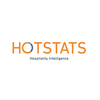July 2017: Profit Hits Low at Hotels in the Middle East & Africa
For hotels in the Middle East & Africa, July marked a low in recent top and bottom line performance as demand levels remained soft during the stifling summer months, according to the latest worldwide poll of full-service hotels from HotStats.
Whilst hotels in the Middle East & Africa recorded a 1.0 percentage point increase in room occupancy in July, to 60.4%, it was at the expense of a 12.7% drop in achieved average room rate, to $140.73, as low demand levels forced hoteliers to discount rates in an attempt to drive top line revenues.
However, as a result of the movement in volume and price, RevPAR at hotels in the region dropped to a monthly five-year low of $84.98, which surpasses the previous low of $93.57 recorded in June 2016.
Further woe was heaped on to hoteliers in the Middle East & Africa as declines in non-rooms revenues, including Food and Beverage (-6.2%) and Conference and Banqueting (-1.0%), contributed to the 9.1% year-on-year drop in TrevPAR, to $149.31. Again, this represented a recent historic low in this metric for hotels in the region.
Profit & Loss Key Performance Indicators – Middle East & Africa (in USD)
- July 2017 v July 2016
- RevPAR: -11.2% to $84.98
- TrevPAR: -9.1% to $149.31
- Payroll: +3.2 pts to 34.5%
- GOPPAR: -27.3% to $35.47
Although hotels in the Middle East & Africa did their utmost to arrest escalating costs, Payroll levels increased by 3.2 percentage points, to 34.5% of total revenue, punctuating a poor month of performance with GOPPAR recorded at just $35.47.
Profit per room this month was at the lowest level recorded in recent years and was 51.8% below the average for the 12-months to July 2017, at $73.63. As a result, profit conversion at hotels in the Middle East & Africa fell to a low of just 23.8% of total revenue.
"The poor profit conversion this month will be unfamiliar to hoteliers in the Middle East & Africa who have become accustomed to recording punchy bottom line performance.
However, much to the disappointment of hotel owners and operators in the region, the challenging market conditions are likely to continue in the short term. This is not only due to the laboured recovery of the oil industry, but many of the new hotel developments which were either late in the planning stages or had already broken ground when the crisis hit, are now coming to fruition," said Pablo Alonso, CEO of HotStats.
Whilst the performance for hotels in Muscat was stronger than in June, year-on-year properties in the capital of Oman suffered significant declines across all key metrics this month, which included a 177.7% drop in profit per room to -$6.76.
Profit & Loss Key Performance Indicators –
Muscat
(in USD)
- July 2017 v July 2016
- RevPAR: -24.1% to $53.80
- TrevPAR: -24.4% to $121.28
- Payroll: +10.0 pts to 60.3%
- GOPPAR: -177.7% to -$6.76
In addition to relying heavily on demand from the oil industry, additions to hotel supply in Muscat in 2017 have put further pressure on hotel performance and have included the three-star 152-bedroom Al Irfan International Hotel and 120-bedroom Muttrah Corniche and four-star 215-bedroom Sundus Rotana.
"As in other locations across the region, it is noteworthy that additions to supply in Muscat are primarily in the mid-market segment, as these destinations look to broaden their appeal to leisure visitors. However, this is likely to not only dilute demand levels but will put real pressure on room rates at the upscale hotels polled in the HotStats sample," added Pablo.
Amongst political demonstrations and disruption in the city, hotels in Amman performed strongly this month, with a 7.8 percentage point increase in room occupancy, to 60.8%, successfully offsetting the 6.9% decline in achieved average room rate, to $144.84.
This month was a welcome respite from the year-to-date performance for hotels in Amman, which have struggled to grow top and bottom line performance so far this year, illustrated by the -8.0% year-to-date RevPAR decline, to $74.74.
The growth this month was even more impressive considering the contribution from the high-yielding contracted corporate and residential conference segments fell, to 33.3% of rooms revenue, against a year-to-date average of 40.7%.
Despite the uplift in volume, hotels in Amman suffered declines in non-rooms, including Food and Beverage (-3.0%), but this was not to the detriment of TrevPAR, which increased by 2.6% to $158.01.
Due to the growth in top line revenue and cost savings, hotels in Amman recorded a 10.8% increase in GOPPAR, to $53.22. This went someway to offsetting the 24.9% year-to-date profit per room decline, to $30.39.
Profit & Loss Key Performance Indicators –
Amman
(in USD)
- July 2017 v July 2016
- RevPAR: +6.8% to $88.02
- TrevPAR: +2.6% to $158.01
- Payroll: -0.7 pts to 27.2%
- GOPPAR: +10.8% to $53.22
About HotStats
HotStats provides monthly P&L benchmarking and market insight for the global hotel industry, collecting monthly detailed financial data from more than 8,500 hotels worldwide and over 100 different brands and independent hotels. HotStats provides more than 550 different KPIs covering all operating revenues, payroll, expenses, cost of sales and departmental and total hotel profitability.
